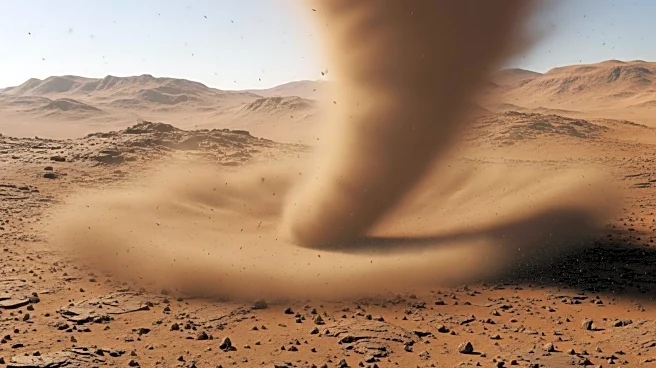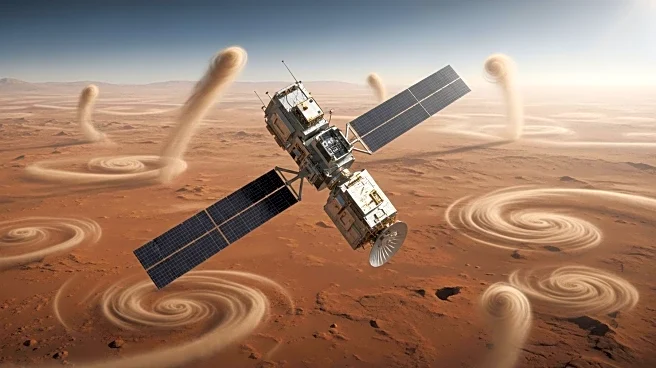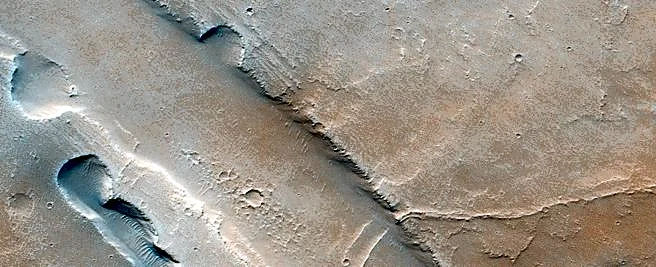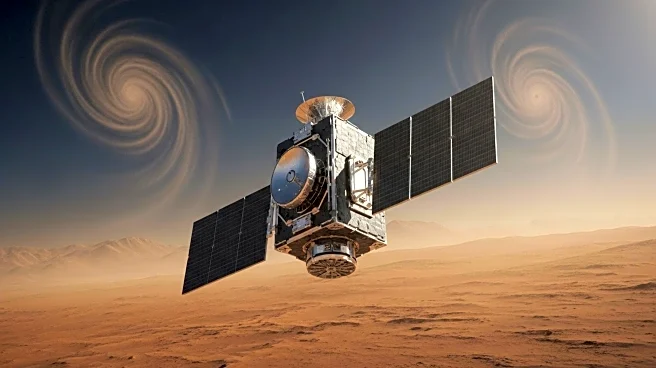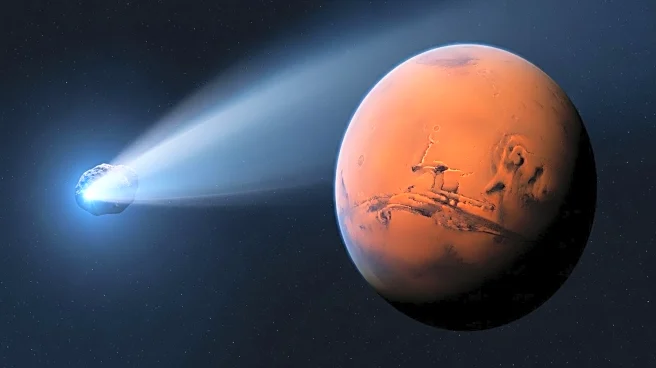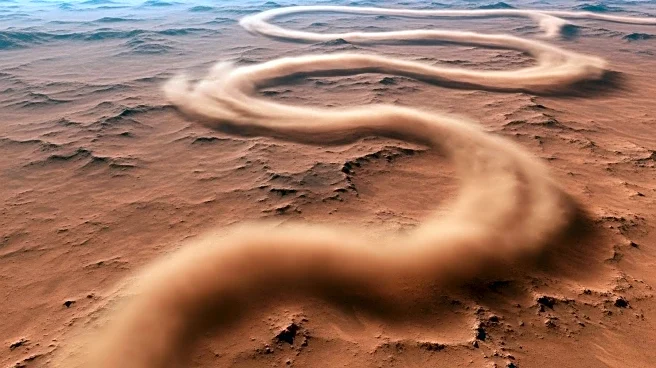What's Happening?
A new study published in Science Advances has revealed that Mars is windier than previously thought, with winds reaching speeds of up to 99 miles per hour. The research, conducted using data from the European Space Agency's Mars Express and ExoMars Trace Gas Orbiter, analyzed over 1,000 dust devils across the Martian surface. These findings provide new insights into the planet's atmospheric conditions, showing that dust devils are more frequent and faster than earlier models predicted. The study also mapped the locations and movements of these dust devils, offering a comprehensive view of Martian wind patterns.
Why It's Important?
Understanding Martian weather is crucial for future missions to the Red Planet, particularly those involving human exploration. The data on wind speeds and dust devil activity can inform landing strategies for rovers and landers, ensuring they are equipped to handle the harsh conditions. Additionally, insights into dust movement are vital for maintaining solar panel efficiency on Mars-based equipment. This research contributes to the broader understanding of Mars' climate, which is essential for planning long-term human presence and scientific exploration on the planet.
What's Next?
The study's findings will guide future imaging efforts to focus on areas with high dust devil activity, improving the accuracy of wind measurements. Researchers plan to coordinate missions to capture simultaneous images of dust devils, enhancing data validation. This ongoing research will support the development of strategies for managing dust accumulation on solar panels, crucial for sustaining equipment on Mars. The insights gained will also aid in selecting safe landing sites for future missions, minimizing risks associated with high wind speeds and dust storms.

